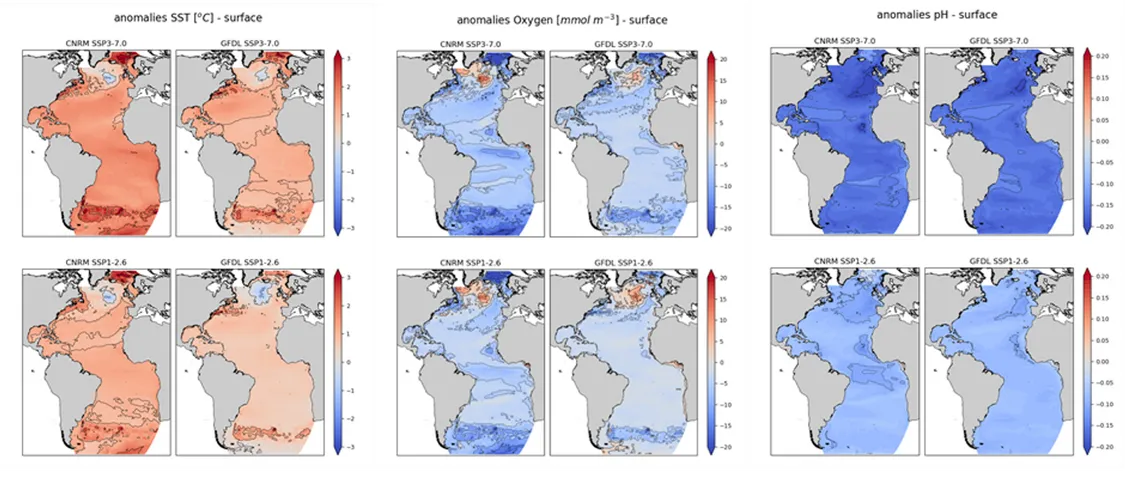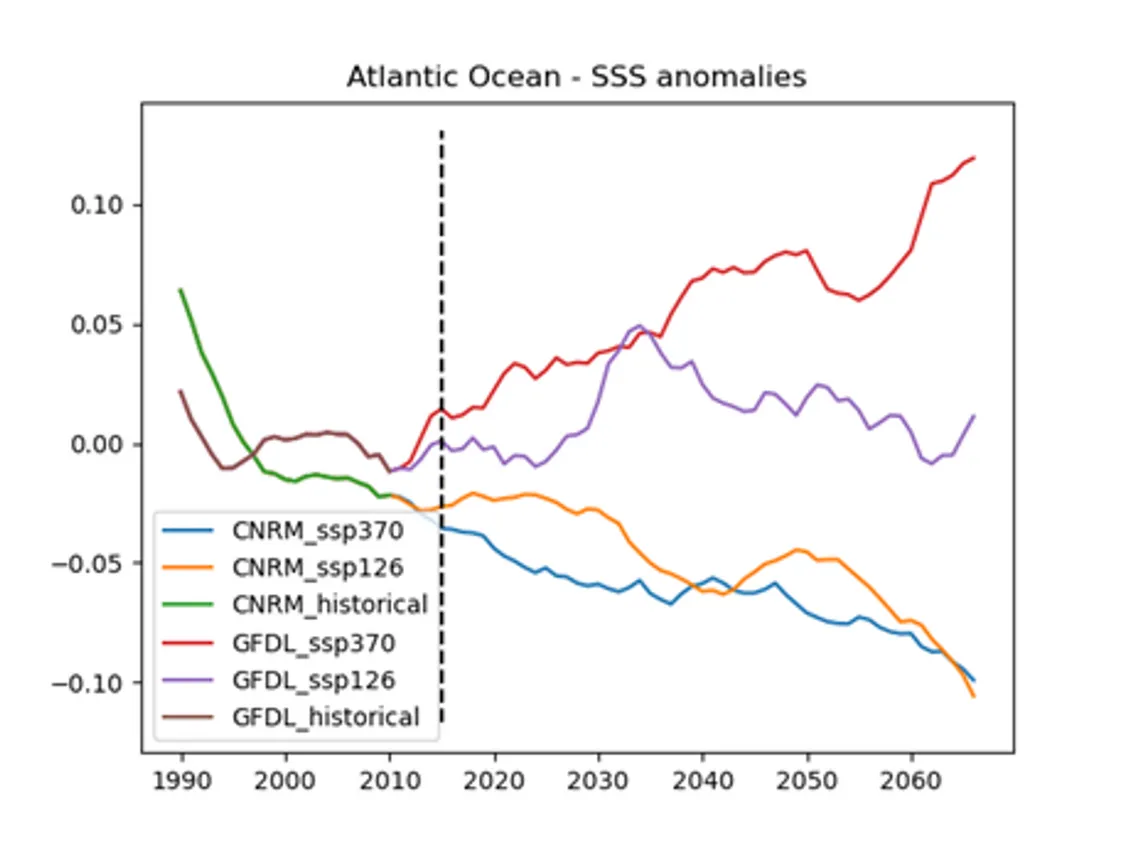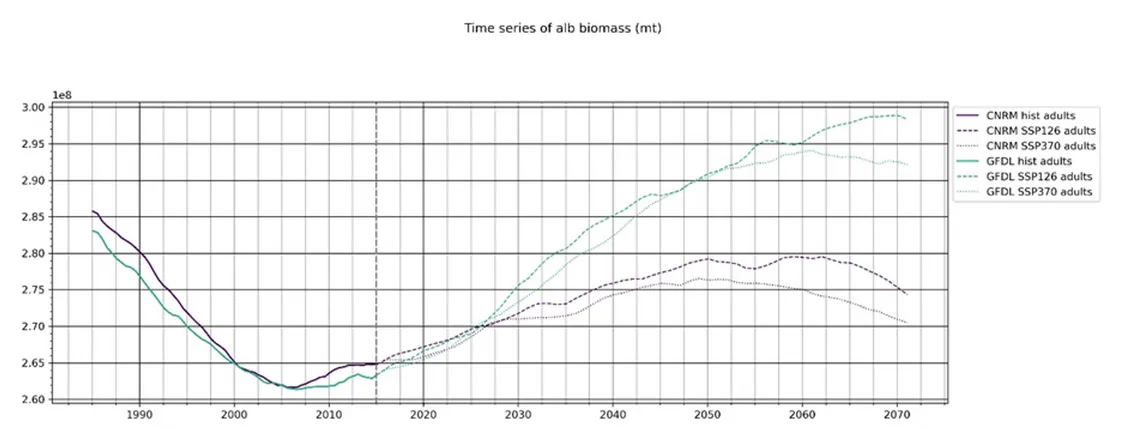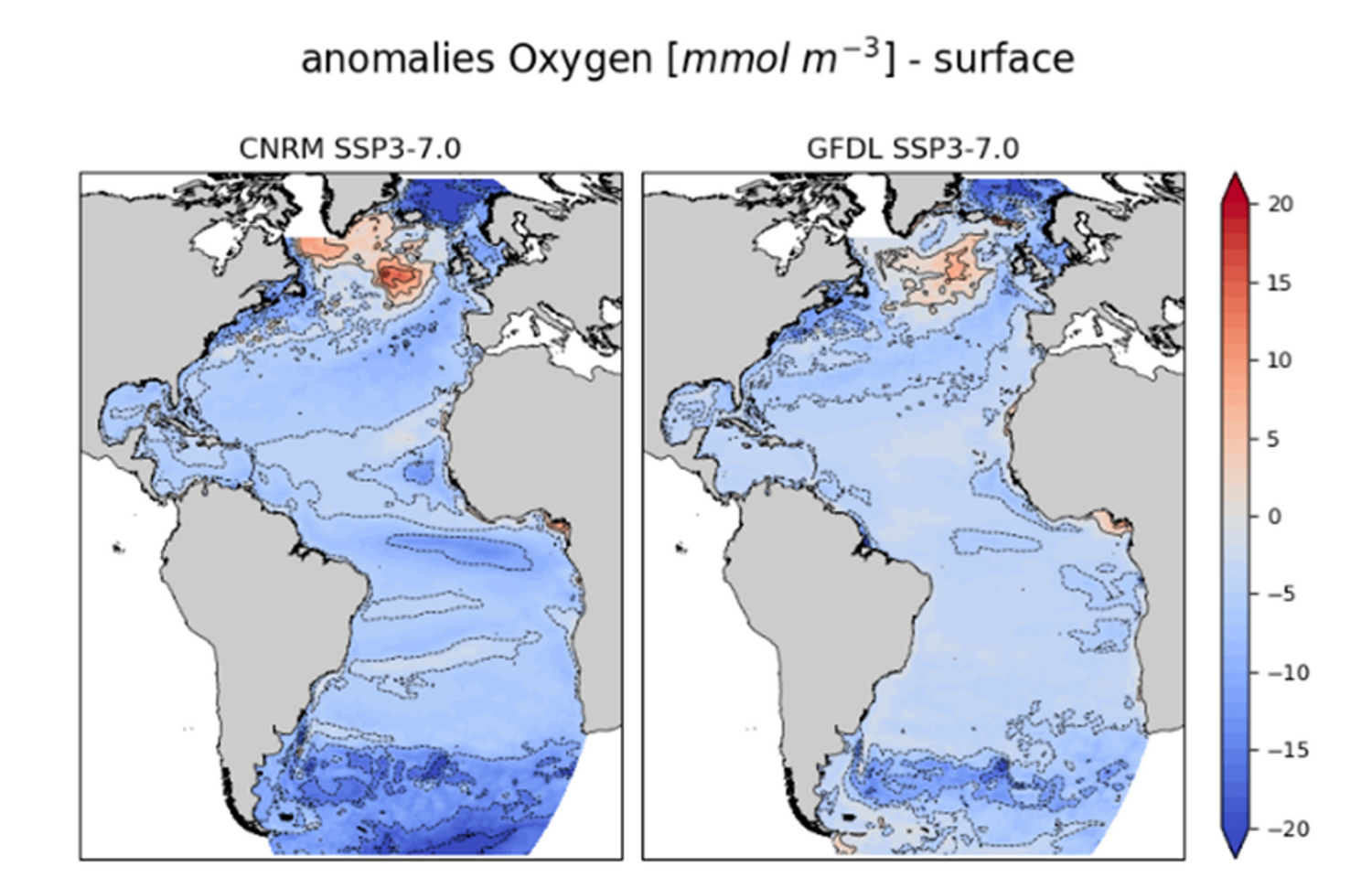A new set of projections of the future state of the Atlantic marine ecosystem as a consequence of climate change and different nutrient emissions from land and atmosphere has been completed in WP6 (see D6.2 for details). The set comprises four different simulations covering two different SSP scenarios: SSP3-7.0, a higher emissions scenario that assumes low international cooperation, and SSP1-2.6 a low emissions scenario with a strong focus on sustainability. For each scenario, we used outputs from two different global climate models used in IPCC, one more sensitive to the increase in greenhouse gases (from CNRM) and one less sensitive (from GFDL).
The projections have been implemented using a set of different models:
- -NEMO-ERSEM: a coupled hydrodynamic-biogeochemical model providing information about future trends of many environmental indicators.
- -SEAPODYM: a model simulating the dynamics of many groups of micronekton (SEAPODYM-MTL) as well as those of two species of tuna (Albacore and Skipjack).
- -Mizer-CSSM: this model simulates the dynamics of the fish community focussing purely on their size.
The latter two models are directly informed by outputs of the NEMO-ERSEM model, making this a coherent and unrivalled set of projections for the whole Atlantic Ocean.
The NEMO-ERSEM model confirms the expected trend of the Atlantic Ocean becoming warmer, more acidic and losing oxygen, however there are significant regional differences (figure 1).
Within the time horizon considered (2070), for many variables the choice of climate models leads to bigger differences than the choice of climate scenarios. Figure 2 shows how when the CNRM climate model was used, the Atlantic Ocean is projected to become significantly fresher in both scenarios, while when the model from GFDL is used, no change or an increase in salinity is projected.
Similarly, the projections show an increase in the biomass of adult Albacore tuna when the climate change projected by the less sensitive climate model is used, and a decrease in the other case (figure 3).
A training video has been produced (MS23), illustrating how these simulations, and these types of models in general, can be used in support of IEA.

Figure1: surface anomalies between the periods 2051-2070 and 1995-2014 in the Atlantic Ocean for temperature, oxygen and pH. Data outside the Atlantic Ocean have been masked.

Figure 2: 10 years rolling mean of the projected trend of anomalies in sea surface salinity (g kg-1) in the Atlantic Ocean compared to the historical period (1990-2014) as projected by the four simulations.

Figure 3: Annual mean biomass of Albacore tunas (in metric tonnes) for the historical (1985-2014) and the forecast period (2015-2070), for both CNRM and GFDL models, for the two scenarios SSP1-2.6 and SSP3-7.0.
This work was carried out by Yuri Artioli (1), Anna Katavouta (2), James Harle (2), Giovanni Galli (1,3,) Lee de Mora (1), Laurène Merillet (4), Sevrine Sailley (1), Anna Conchon (4), Jason Holt (2)
- Plymouth Marine Laboratory, Plymouth, UK
- National Oceanography Centre, Liverpool, UK
- National Institute of Oceanography and Applied Geophysics, Italy
- Sustainable Fisheries team, Collect Localisation Satellite, Toulouse, France
